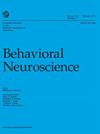Brain electrical patterns associated with pleasure and emotion induced by tonal and atonal music.
IF 1.5
4区 医学
Q3 BEHAVIORAL SCIENCES
引用次数: 0
Abstract
Several studies in the last 40 years have used electroencephalography (EEG) to recognize patterns of brain electrical activity correlated with emotions evoked by various stimuli. For example, the frontal alpha and theta asymmetry models to distinguish musical emotions and musical pleasure, respectively. Since these studies have used mainly tonal music, in this study, we decided to incorporate both tonal (n = 8) and atonal (n = 8) musical stimuli to observe the subjective and electrophysiological responses associated with valence, arousal, pleasure, and familiarity, from 25 nonmusician Mexican adults (10 females, 15 males; M = 37.8 years old, SD = 15.1). Our results showed that atonal music was perceived as less familiar and pleasurable than tonal music, according to the average subjective ratings. Interestingly, greater right hemispheric activity (alpha suppression) was associated with atonal music listening. Additionally, there was an increase of theta power at the right frontal cortex (F4) correlated with a decrease of pleasure ratings, in line with the frontal theta asymmetry (FTA) model. Finally, according to the model of frontal alpha asymmetry (FAA) to distinguish musical emotions, activation (alpha suppression) of the left frontal cortex (F3) was correlated with greater valence and arousal-that is, joyful music. (PsycInfo Database Record (c) 2024 APA, all rights reserved).调性音乐和无调性音乐诱发的与愉悦和情感相关的脑电模式。
在过去的 40 年中,有多项研究利用脑电图(EEG)来识别与各种刺激引起的情绪相关的脑电活动模式。例如,额叶α和θ不对称模型分别用于区分音乐情绪和音乐愉悦。由于这些研究主要使用的是调性音乐,因此在本研究中,我们决定同时使用调性(n = 8)和无调性(n = 8)音乐刺激,以观察 25 名非音乐家的墨西哥成年人(10 名女性,15 名男性;男 = 37.8 岁,女 = 15.1 岁)与情绪、唤醒、愉悦和熟悉程度相关的主观反应和电生理反应。我们的研究结果表明,根据主观评分的平均值,人们对无调性音乐的熟悉度和愉悦感均低于对调性音乐的熟悉度和愉悦感。有趣的是,右半球活动(α抑制)与听无调性音乐有关。此外,右侧额叶皮层(F4)θ功率的增加与愉悦感评分的降低相关,这与额叶θ不对称(FTA)模型一致。最后,根据额叶α不对称(FAA)模型来区分音乐情绪,左侧额叶皮层(F3)的激活(α抑制)与更高的情绪和唤醒相关,即快乐的音乐。(PsycInfo Database Record (c) 2024 APA, 版权所有)。
本文章由计算机程序翻译,如有差异,请以英文原文为准。
求助全文
约1分钟内获得全文
求助全文
来源期刊

Behavioral neuroscience
医学-行为科学
CiteScore
3.40
自引率
0.00%
发文量
51
审稿时长
6-12 weeks
期刊介绍:
Behavioral Neuroscience publishes original research articles as well as reviews in the broad field of the neural bases of behavior.
 求助内容:
求助内容: 应助结果提醒方式:
应助结果提醒方式:


